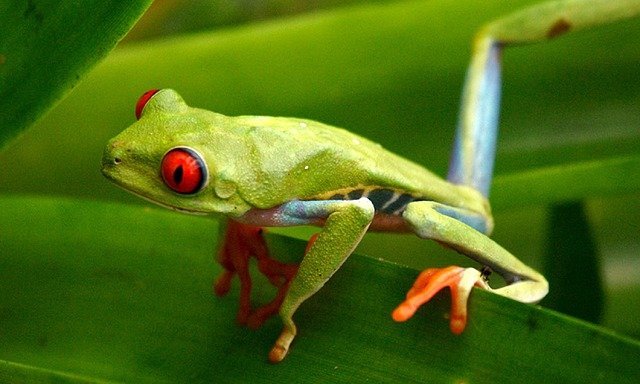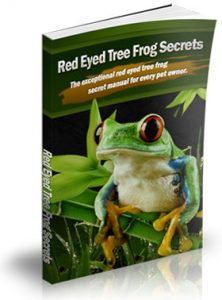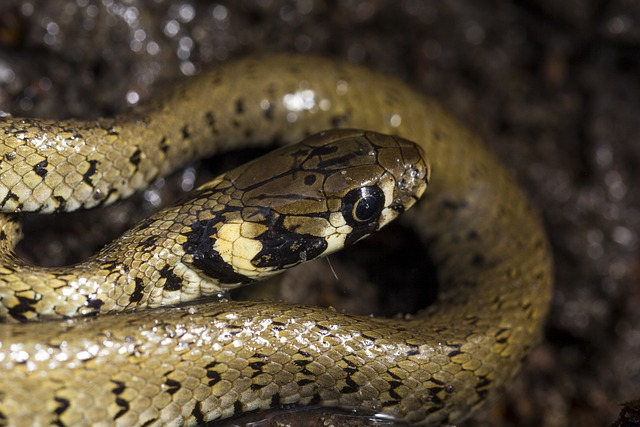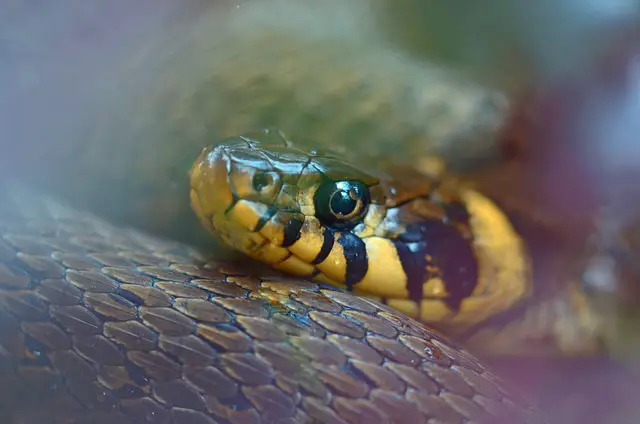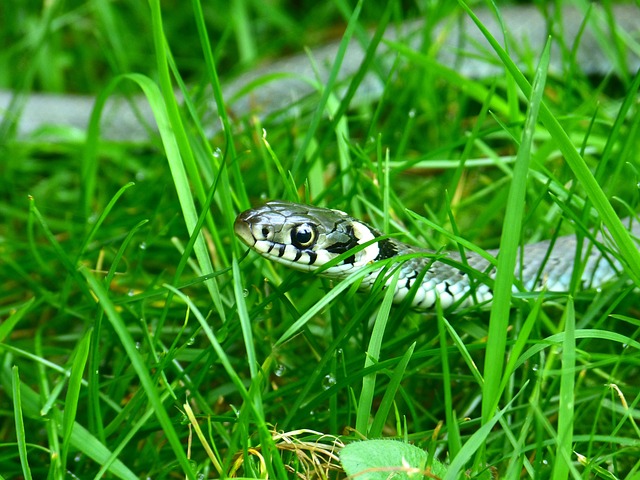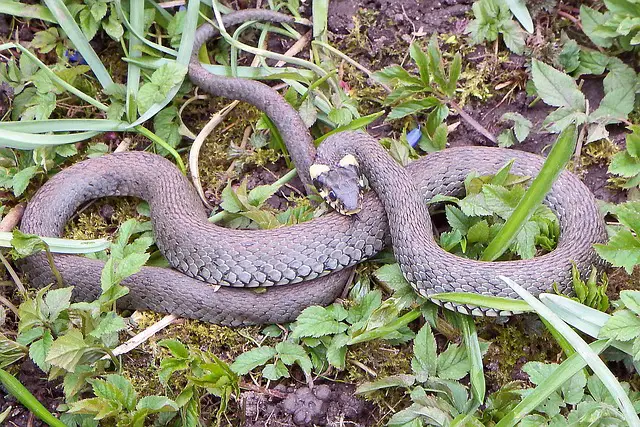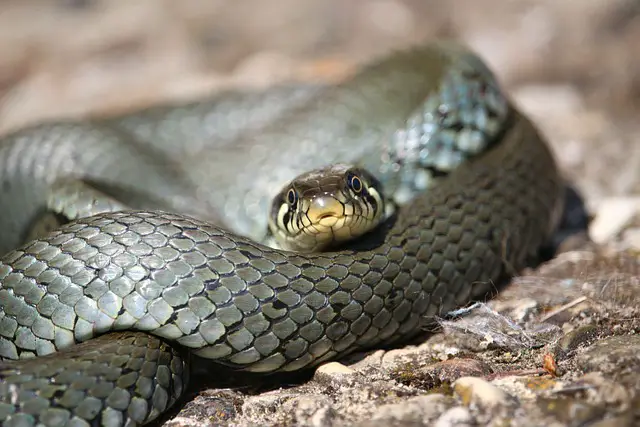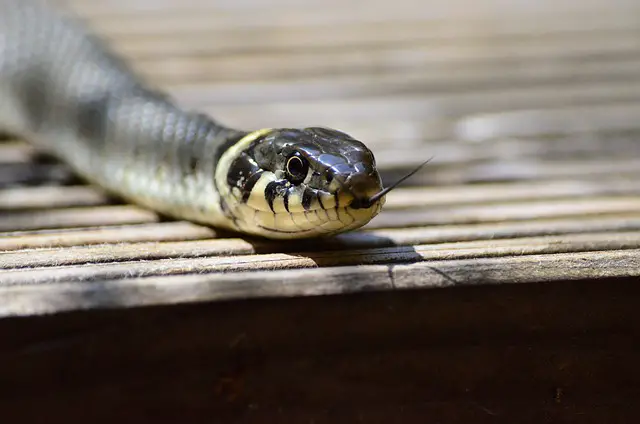Red-eyed tree frogs and chameleons are both fascinating creatures for the aspiring herpetologist. Although both creatures are captivating, though, they are not compatible with each other and should not be kept within the same terrarium.
A Note About Chameleons
There are 171 different chameleon species, a handful of which are popular as pets. One of the more common pet chameleon species is the veiled chameleon. While many pet chameleon species share the same habitat requirements, the information provided below refers to the veiled chameleon.
Why Can’t a Red-Eyed Tree Frog Live With a Chameleon?
Level of Care
The chameleon is a good choice of pet for a pet owner with less experience with reptiles. The veiled chameleon is relatively low maintenance when it comes to pet care.
The red-eyed tree frog is not an ideal first pet for a pet owner who is inexperienced with amphibians. Caring for the red-eyed tree frog requires a moderate amount of amphibian knowledge.
A pet owner with no experience caring for amphibians or reptiles may find caring for the chameleon easy. Adding a red-eyed tree frog to the terrarium, however, can cause complications.
Without knowing how to care for a red-eyed tree frog, a newer pet owner can inadvertently cause the frog to become ill. This sickness can then contaminate the environment and cause the chameleon to contract an illness too.
Different Preferences for Company
The chameleon is NOT a social animal: it does not need nor desire company.
The red-eyed tree frog is a social creature, and it is happiest when kept with at least one other frog of the same species.
This difference in sociability will cause the chameleon to feel nervous, irritated, and on-edge when forced to live with a red-eyed tree frog. Eventually, the frustration of feeling this way can drive the chameleon to attack the frog and or display physical signs of stress.
Signs of stress in a chameleon include
- Changing to a much darker color
- Making themselves look larger by puffing up
- Biting
- Running and hiding
The different levels of sociability will cause the treefrog to feel isolated and unhappy as well as afraid.
Signs of isolation and fear in a red-eyed tree frog include
- Hiding behavior
- Changes in color
Nocturnal Versus Diurnal
The chameleon is a diurnal creature meaning that it is most active in the daytime and less active at night.
The red-eyed tree frog is a nocturnal creature meaning that it is most active at night and less active in the daytime.
This difference in lifestyles will throw off the circadian cycle of both animals. A disruption in circadian rhythm can cause a change in eating habits, altered behavior, an unusual sleep schedule, weight gain or loss, and impact overall wellbeing. These changes can lead to one animal attacking the other, high levels of stress in both animals, and even death.
Different Temperaments
The chameleon is a highly-strung reptile that is very territorial. When unnerved or uncomfortable, the chameleon can also be aggressive and bad-tempered.
The red-eyed tree frog is a calm and friendly creature that is quite “easy-going.”
Having such different temperaments means that when forced to live together, these two species are unhappy. The chameleon is going to aggress the tree frog and cause the frog to become stressed or even physically hurt.
Living Environment
A chameleon’s terrarium should
- Be taller than it is wide. (A larger cage is better.)
- Have a newspaper type substrate to absorb excess moisture.
- Have an overall daytime temperature of between 72° – 80°F.
- Have a basking spot heated to 85° – 95°F.
- Have a nighttime temperature of around 65°F.
- Provide exposure to UVB light (the veiled chameleon needs 12 hours of UVB exposure daily.)
- Have a humidity level close to 50%
- Provide 14 hours of light and 10 hours of darkness.
- Provide a dark nighttime environment.
- Have plants, sticks, vines, etc. for climbing.
- Have a horizontal platform for basking.
- Have shady areas for cooling down.
A red-eyed tree frog’s terrarium should
- Be taller than it is wide (a larger cage is better.)
- Have a substrate of coconut husk or moist paper towels
- Have an overall temperature of between 76° – 82°F.
- Have a heated spot that is 82° – 84°F.
- Have a nighttime temperature of around 72° – 75°F.
- Provide exposure to low-level UVB light
- Have a humidity level close to 60-80%
- Provide 10 hours of light and 14 hours of darkness.
- Have plants, hollow logs, vines, etc. for climbing.
- Have a nocturnal heating bulb.
- Have shady areas for hiding.
There are some stark differences in the ideal living environments for these two creatures. Most notably, the chameleon requires more exposure to UVB light, longer daylight hours, and direct access to a basking lamp. The red-eyed tree frog, however, requires filtered exposure to UVB light, longer nighttime hours, and exposure to low-level heat for basking.
Water
The chameleon drinks from water droplets that collect on leaves in the rainforest. This environment is replicated in tanks by misting the tank well daily. Mist the terrarium with enough water to collect on foliage so that the chameleon stays well hydrated.
The chameleon has no interest in water dishes or pools of water, and water features in the tank pose a risk of bacterial growth.
The red-eyed tree frog is a weak swimmer. This species does best when given a wide but shallow water dish where they can “soak.” Never fill water dishes in the tank above the level of the frog’s mouth, and be sure the frog has a way to get out of the water dish after soaking.
The frog’s tank should also be well-misted with water each day to maintain humidity and to allow water droplets to collect on leaves for drinking.
Diet
The chameleon is an omnivore, but the majority of their diet consists of insects like crickets. Crickets should be live, and they should be fed healthy greens and veggies and given or dusted with a calcium or D3 supplement before being given to the chameleon. Adult chameleons should eat every other day.
The red-eyed tree frog is an insectivore. A large portion of an adult red-eyed tree frog’s diet consists of live crickets fed every two to three days. Before being given to the tree frog and they should be given or dusted with a calcium or D3 supplement.
Having similar dietary needs increases the level of competition between the chameleon and the red-eyed tree frog, which can cause more aggression.
Can a Chameleon Have Tankmates?
The veiled chameleon is a creature that prefers to live alone and is happiest with no tankmates.
Can a Red-Eyed Tree Frog Have Tankmates?
Red-eyed tree frogs are social, so they prefer to have tankmates. It is best to keep at least two red-eyed tree frogs together. Three or four of these frogs would be happy living together in a large habitat.
The red-eyed tree frog can also do well in a tank with
- American Green Tree Frogs
- Barking Tree Frogs
- Grey Tree Frogs
- Red-Eyed Tree Frogs
- White Lipped Tree Frog
When mixing multiple species of tree frogs, make sure to have at least two of each species and be sure that your tank is big enough to accommodate each frog. (A single red-eyed tree frog needs a tank of twenty gallons+ and each additional frog requires ten more gallons.)
Below is our very own guide to keeping Tree Frogs happy and healthy. Just click on the image below.

